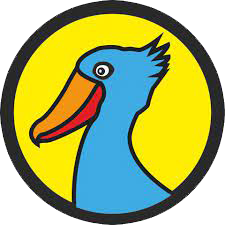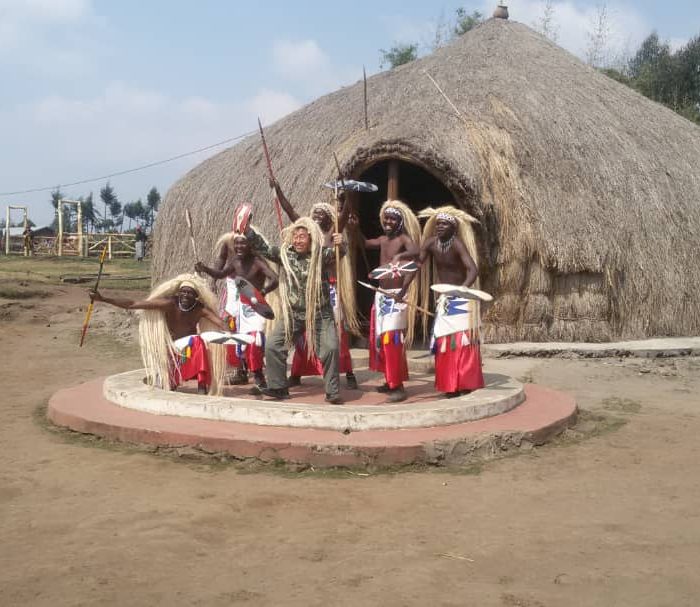THE HISTORY OF THE RWANDA GENOCIDE
Ethnic tension between the Hutu’s and minority Tutsi had always simmered and often erupted in Rwanda but tensions escalated in 1990 when the Rwanda patriotic front, a group mainly made up of Tutsi refugees who invaded Northern Rwanda in pursuit to over throw the Hutu led government. This offensive sparked the Rwandan Civil war, a battle between the Hutu regime supported by the French speaking nations of Africa and France fighting against the RPF who were Tutsi refugees supported by Uganda. The tension grew to a critical point with many Hutus gathering force behind Hutu power. French and Zyi troops were sent in to help the Hutu government to try and maintain peace because of fierce fighting between the two groups. A cease fire was signed in March 19991 and the RPF guerillas retreated to the mountains to the north. While the Rwandan army trained an armed civilian militia, the RPF launched a new offensive and reached the out skirts of Kigali. French forces were called in and fighting continued for several months. After months of negotiation in August 1993 the rebels and the government of Rwanda signed the Arusha Accords peace treaty, a treaty which allowed for the return of refugees and a coalition Hutu RPF government.
However, as leader of the Hutu coalition for the defense of the republic CDR Rwandan president Juvenal Habyarimana later stalled on setting up the power sharing government. In August, UN Commander Lieutenant General Romeo Dallaire made a reconnaissance trip to Rwanda for a peace keeping mission. The peace keeping mission raveled into a debacle as the United Nations established the United Nations assistant mission for Rwanda UNAMI in October to help implement the Arusha record and put an end to the Rwandan Civil war.
However, this peace keeping mission became frustrated by its rules of engagement and they approved 2500 personnel took five months of piecemeal commitments to reach its level. The UNAM ear aim of helping form a transitional government was delayed by squabbling between the parties and when President Javier Romano was inaugurated in January 1994 violent clashes followed. Nothing could prepare Rwanda or the world for the incomprehensible genocide that was triggered by the assassination of Rwandan President and Burundi president Cyprien Natura Mira on April 6, 1994.
The mangled wreckage of an aero plane shot down over Kigali, Rwanda on April 6, 1994 became a single act of terrorism that ignited ethnic tension between the Hutu’s and Tutsi’s. It spear headed 100 days of un precedented savage and merciless killing. With the assassination of Hutu Rwandan president, Juvenal Habyarimana, the Hutu’s sought a blood thirsty revenge on the minority Tutsi’s and their supporters. Within hours of the president’s death, the genocide began, a frenzied campaign of mayhem that left more than 100,000 people regardless of age or gender systematically slain. Road blocks were set up preventing Tutsi’s from escaping but most were murdered in their own villages and homes. With guns and grenades scarce, most were murdered with machetes. The grim sight thousands of bodies littered the country side and streets. This form of racialism identified people according to physical characteristics where they were slaughtered by machete.
Rwanda’s history has been turbulent for centuries and in the early 1900’s Belgium colonists turned the traditional Hutu-Tutsi relationship in the colony of Rwanda Ronde into a class system favoring the minority Tutsi over the Hutu’s. In the late 1950’s the Hutu’s formed the Hutu emancipation movement rebelling against the Belgian colonial power and Tutsi elite which resulted to 150,000 Tutsi’s fleeing to Burundi. In the 1960’s the Hutu’s restored their power by winning elections organized by the Belgian colonial rulers. In 1962 Belgium withdrawals leaving Rwanda and Burundi as two independent countries. Following the withdrawal of Belgian colonial rulers, a bloody Hutu revolution left in its wake the horror of massacred Tutsi’s and those that managed to survive the bloodshed, the prospect of fleeing their homeland for nearby states.
The after math of this conflict saw the installation of a new President. Grigore K Abunda yet fighting continued. Under this new regime, the Tutsi’s especially those previous in power were ruthlessly persecuted many of the educated fleeing the country seeking refuge in nearby Uganda and other areas in nearby Burundi. The Tutsi’s retained their power. In the 1960’s more massacres of Tutsi’s took place this time in response to military attacks by Tutsis in Burundi. Once again Tutsi refugees were forced to leave their homeland. By July 1973, general Juvenal Habyarimana seized power promising to restore order, he set up a one-party state with a policy of ethnic quotas in all public service jobs with Tutsi’s restricted nine percent of all jobs.
On April 7 1994, the day after President Habyarimana’s assassination, the Rwanda armed forces and the Inter ham away Hutu militia set up roadblocks and systematically went from house to house killing Tutsi’s and moderate Hutu politicians. Mayhem and confusion reign as thousands died in the carnage on the first day. Some by gunshot but most by the brutal slaying of the machete. Tutsi were slain while trying to save their lives. UN forces stand helplessly by while the slaughter unfolds around them, they have been forbidden to intervene as this would breach their monitoring mandate.
On the second day of the slaughter, the Rwandan Patriotic Front launched a major offensive to end the genocide and rescue 600 of its troops surrounded in Kigali. Its troops had been stationed there as part of The Arusha Accords. In desperation Hutu’s tried to escape the impending slaughter by the Hutu militia and bands of Hutu civilians that had been incited to join the killings. The militia and civilians were on the move as a systematic murder of Tutsis regardless of age or gender was underway. While the un-led Eunomia was based in Kigali escorting Tutsis, they were unable to stop the Hutus from escalating their attacks. After UN personnel were attacked, Lieutenant general Dallaire cabled New York detailing the killings of politicians and peace keepers and informing the UN that the violent campaign was organized deliberate and undertaken by the presidential guard. Amid the rousing confusion, a Rwandan television reported his Belgian peace keepers of being involved in the Presidents assassination. This report had been since directly linked to the killing of ten Belgian UN troops by Rwandan army soldiers. The hotel DeMille Colleen in Kigali became an unlikely heaven for thousands of refugees fleeing the murder squads. The hotel manager kept the Hutu militia at bay by bribing them with money and alcohol and providing the refugees held up inside with food and water salvaged from the hotel swimming pool.
Word of the violent killings began to spread around the globe with Care international in the UK becoming involved. The horror of this genocide become apparent on April 9 when UN observers witnessed the ruthless massacre of innocent children at a Polish church in Nkikando by the Hutu militia. They watched helplessly as the carnage unfolded. On the same day 1000 heavily armed and trained European troops arrived to escort European personnel out of the country, the news story was picked up by the world media when the Washington Post reported on the execution of Rwandan employees of relief agencies in front of their expatriate colleagues.
On April 21, UN cut its forces from 2500 to 250 following the brutal murder of 10 Belgian soldiers guarding moderate Hutu prime minister Agabe Yuwirimana. The prime minister was killed and Wireman the Belgians disarmed, tortured and hacked to death. Their instructions from Un commander were not to resist violently as this would have breached their mandate.
By early July the Rwandan Patriotic Front had captured Kigali and the Hutu government fled to Zaire followed by a tide of refugee’s troops from neutral countries were building but this was no defense against high explosives. Civilian workers and their children thought that here they were safe. Troops carrying small arms were out gunned and virtually defenseless. Dellaire rushed back to rally his men and brief them on the situation. Meanwhile those staying in the area ran two armored vehicles that brought them there and stated that the UN was clearly the target as bullets ricocheting off the vehicles as they drove a way. At dawn on the fourth day, rebel troops were seen moving out across the runway. They had won, this major strategic base Kigali Airport was theirs. Prisoners and refugees were being lined up and searched for the most part they weren’t soldiers but civilian militia, people alleged to have done so much damage. Hundreds of machetes were confiscated but rebels and the UN offices the weapon of choice. A pitiful exodus followed a country of slaughter over a million people inside Rwanda were on the move, the majority from the Hutu tribe escaping the relentless advance of the rebel Tutsi army as gunfire echoed across distant hills, panic sitting amongst women and children fearing revenge for the mass killings. Trapped in a grim camp 30 miles from the capital Kigali, 20,000 refugees gathered. Thousands of Hutus fled to Burundi, Tanzania, Uganda and mainly Zaire hoping to escape Tutsi backlash. Many faced deaths with from the squalor of refugee camps, wrath with cholera and dysentery.
UN agencies clash over reports RPF troops have carried out reprisal killings in Rwanda and several hundred civilians are said to have been executed yet killing of Tutsis continued in the refugee camps. On June 22nd 1994, with no sign of UN deployment, the Security council authorized the deployment of French forces to land in Ghana, Zaire on a humanitarian mission deployed in south west Rwanda, a safe area coins earned turquoise is created yet killing of the Tutsis continued. Rwandan ambassador to France, Jacques Bihozagara later testified operation turquoise was aimed at only protecting the genocide perpetrators as genocide of the Tutsi continued with in the so-called safe zone.
In New York on October 6 1994, Rwandan president Pasteur Bizimungu addressed the 49th session of the United Nations general assembly. It wasn’t until January 1997 that the first case in the Rwandan genocide trials was heard before the International crime tribunal in Arusha, Tanzania. Jean Paul Ikuyusu is a local government official accused of ordering mass killings in his area. This was a first of many trials that exposed the atrocities that occurred during the 100 days of Rwandan genocide. It is a gruesome journey as evidence is delivered detailing accounts of the bloodshed.
Ten years after the brutal massacre on April 6, 2004, world leaders and survivors of the genocide gathered in Kigali and observed three minutes of silence as part of many memorials being held worldwide. Rwandan president Paul Kagame international dignitaries and Rwandan citizens packed a stadium to pay homage to the 800,000 victims of the slaughter. As choir sang haunting songs, all were reminded of the senseless genocide of almost 1 million innocent people with the slogans ‘NEVER AGAIN, PLUS JAMAIS’

